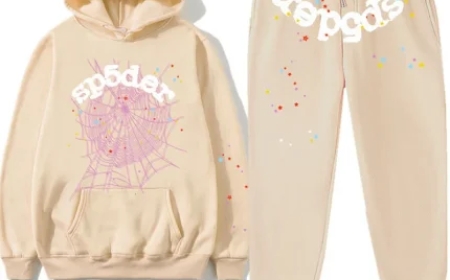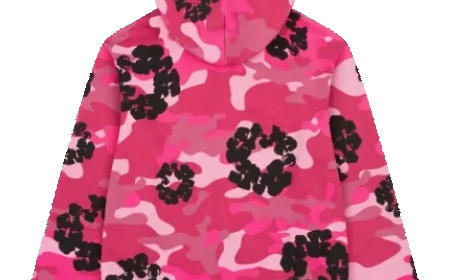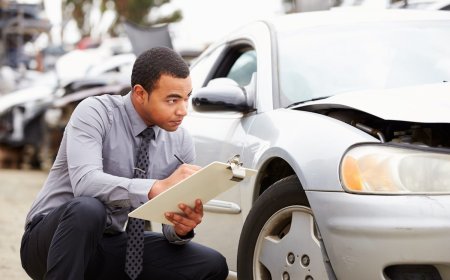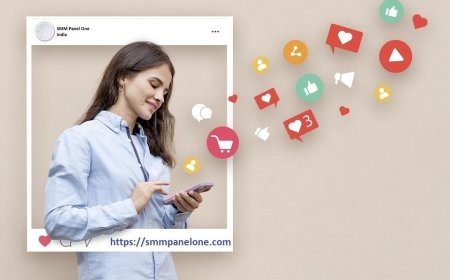How to visit Wynwood Walls
How to Visit Wynwood Walls Wynwood Walls is more than just an outdoor art gallery—it’s a cultural landmark, a global destination for street art enthusiasts, and a living canvas that reflects the evolution of urban expression. Located in the heart of Miami’s Wynwood neighborhood, this open-air museum has transformed a once-neglected industrial district into one of the most vibrant and Instagram-fam
How to Visit Wynwood Walls
Wynwood Walls is more than just an outdoor art gallery—it’s a cultural landmark, a global destination for street art enthusiasts, and a living canvas that reflects the evolution of urban expression. Located in the heart of Miami’s Wynwood neighborhood, this open-air museum has transformed a once-neglected industrial district into one of the most vibrant and Instagram-famous art districts in the world. For travelers, photographers, artists, and curious explorers, visiting Wynwood Walls is not just an activity—it’s an immersive experience that blends creativity, history, and community.
Yet, despite its fame, many visitors approach Wynwood Walls with little preparation, leading to missed opportunities, overcrowded timing, or incomplete understanding of its significance. This guide is designed to help you navigate every aspect of your visit—from planning and logistics to appreciating the art on a deeper level. Whether you’re a first-time tourist or a seasoned art lover, this comprehensive tutorial will ensure your journey to Wynwood Walls is seamless, meaningful, and unforgettable.
Step-by-Step Guide
1. Research the History and Significance of Wynwood Walls
Before stepping foot into the district, take time to understand what makes Wynwood Walls unique. Founded in 2009 by Tony Goldman, a real estate developer and art patron, the project was conceived as a way to revitalize the abandoned warehouses of Wynwood through large-scale, site-specific murals. Goldman envisioned a space where international artists could create without censorship, turning derelict buildings into monumental works of public art.
Today, Wynwood Walls features over 80 murals from more than 150 artists across 40 countries. The project has become a catalyst for the broader Wynwood Arts District, which now includes over 100 galleries, design studios, boutiques, and restaurants. Knowing this context transforms your visit from a photo op into a cultural pilgrimage.
2. Choose the Right Time to Visit
Timing is critical when visiting Wynwood Walls. The district is busiest on weekends, especially Saturday afternoons and Sunday mornings. If you want to avoid crowds and capture unobstructed photos, aim for a weekday visit between 9:00 AM and 11:00 AM. The lighting during these hours is soft and golden, ideal for photography.
Conversely, if you’re drawn to the lively energy of the neighborhood—live music, food trucks, pop-up vendors—visit on Friday or Saturday evenings between 6:00 PM and 9:00 PM. The area comes alive with locals and tourists mingling, and many galleries host opening receptions during this time.
Avoid visiting during extreme heat (mid-June to mid-September) unless you’re prepared with sun protection. Miami’s humidity can make walking uncomfortable, especially under direct sunlight. Early morning or late afternoon visits are not only cooler but also more enjoyable.
3. Plan Your Transportation
Wynwood Walls is located at 2520 NW 2nd Ave, Miami, FL 33127. The easiest way to reach it depends on your starting point:
- By Car: Parking is available on surrounding streets and in public lots. The most convenient option is the Wynwood Parking Garage at 2525 NW 2nd Ave. Rates are typically $10–$15 for up to 4 hours. Avoid parking on the sidewalks or blocking driveways—enforcement is strict.
- By Ride-Sharing: Uber and Lyft drop-offs are allowed on NW 2nd Ave. Use the address above to ensure accurate navigation.
- By Public Transit: Miami-Dade Transit’s Metrobus Route 3 runs along NW 2nd Ave. The nearest stop is “NW 2nd Ave & NW 24th St.” From there, it’s a 5-minute walk to the entrance.
- By Bike: Wynwood is bike-friendly, with dedicated lanes and multiple bike racks near the main entrance. Consider renting from Citi Bike or Lime for a short-term ride.
Pro tip: If you’re staying in downtown Miami or South Beach, consider taking a guided bike tour that includes Wynwood as a stop. These tours often provide historical context and access to hidden murals not marked on standard maps.
4. Purchase Tickets (If Required)
Wynwood Walls is free to access during daylight hours, and you can walk through the outdoor mural courtyard without paying. However, if you want to enter the adjacent Wynwood Walls Museum (a climate-controlled indoor space featuring rotating exhibitions, artist interviews, and archival materials), you must purchase a ticket.
Tickets for the museum are available online at wynwoodwalls.com or at the on-site box office. Prices are $20 for adults, $15 for seniors and students, and free for children under 12. Online booking is recommended, especially during holidays and peak seasons, as walk-in availability is limited.
Consider purchasing a combo ticket that includes entry to the museum and a guided walking tour. These tours, offered daily at 11:00 AM and 3:00 PM, last approximately 90 minutes and are led by local art historians who reveal the stories behind each mural, the techniques used, and the cultural messages embedded in the artwork.
5. Map Out Your Route
Wynwood Walls spans five city blocks and includes over 20 buildings covered in murals. To make the most of your time, use the official Wynwood Walls map available on their website or pick up a free printed copy at the information kiosk near the main entrance.
Key areas to prioritize:
- The Main Courtyard: The heart of Wynwood Walls, featuring the most iconic murals such as “The Last Message” by Os Gemeos and “The Family” by Retna.
- Building 14: Home to the largest mural in the complex—a 30-foot-tall piece by Brazilian artist Eduardo Kobra, known for his vibrant, geometric portraits.
- Building 1: Features rotating installations and is often the site of new artist debuts.
- The Back Alley: A lesser-known corridor filled with experimental street art, tags, and stencil work. Often overlooked but rich in hidden details.
Use your phone’s camera to take pictures of the map or screenshot the digital version. Many murals are not labeled, so having a visual reference helps you identify artists and themes as you explore.
6. Dress Appropriately
Wynwood Walls is an outdoor space with uneven pavement, gravel paths, and occasional puddles after rain. Wear comfortable, closed-toe shoes—sandals or heels are not recommended. The ground can be hot in summer and slippery in winter.
Dress in layers. Miami’s weather changes rapidly. A light jacket or hoodie is useful in the evening, even if it’s warm during the day. Avoid wearing white clothing if you plan to touch any murals or lean against walls—some paints are still fresh or can transfer.
Consider bringing a wide-brimmed hat, sunglasses, and sunscreen. UV exposure in Miami is intense, and you’ll be spending extended time outdoors.
7. Bring the Right Equipment
While not mandatory, certain items enhance your experience:
- A high-quality camera or smartphone with manual settings: Many murals are designed for photography. Use the rule of thirds, play with shadows, and experiment with angles to capture the full scale of the artwork.
- A portable charger: Your phone will be in constant use for navigation, photos, and social media. A 10,000mAh power bank ensures you won’t lose connectivity.
- A small notebook or journal: If you’re an artist or writer, jot down impressions, colors, or phrases that stand out. Many murals contain hidden text, coded messages, or political commentary.
- A reusable water bottle: Staying hydrated is essential. There are no water fountains inside the walls, but many nearby cafes offer free refills if you make a purchase.
8. Respect the Art and the Community
Wynwood Walls is not a theme park—it’s a curated public art space with deep cultural meaning. Follow these simple rules:
- Do not touch the murals. Even light contact can damage paint, especially on newer works.
- Do not climb on walls or fences. This is dangerous and disrespectful.
- Do not spray paint, tag, or deface any surfaces. Violators are subject to fines and removal.
- Be mindful of other visitors. Avoid blocking views or shouting in quiet areas.
- Ask before photographing people. Many locals and artists are present and may not want to be in your photos.
Remember: The artists who create these works often travel thousands of miles and spend weeks completing them. Treat their labor with reverence.
9. Explore Beyond the Walls
Wynwood Walls is just the centerpiece of a much larger district. After your visit, take a 10-minute walk to explore:
- Wynwood Marketplace: A curated collection of local designers, vintage shops, and artisanal food vendors.
- Wynwood Brewing Company: One of the first craft breweries in the area, known for its experimental IPAs and outdoor seating.
- MOCA North Miami: A contemporary art museum located just 10 minutes away, featuring avant-garde installations.
- Artisanal Coffee Shops: Try “The Wynwood” or “Browns Coffee” for locally roasted beans and minimalist design.
Many of these spots feature rotating art exhibits, live DJ sets, and poetry readings. Check their social media for weekly events.
10. Document and Share Responsibly
Wynwood Walls is one of the most photographed places in Florida. But with popularity comes responsibility. When posting photos online:
- Tag the artists when possible. Many muralists have Instagram accounts and appreciate recognition.
- Use location tags like
WynwoodWalls, #WynwoodMiami, and #StreetArtMiami to help others discover the district.
- Avoid using filters that distort the original colors. The murals were painted with specific palettes for emotional impact.
- Do not use images for commercial purposes without permission. Most murals are protected under copyright law.
Sharing your experience thoughtfully helps preserve the integrity of the space and supports the artists who made it possible.
Best Practices
1. Visit During Off-Peak Hours for Authentic Experiences
One of the most overlooked best practices is timing your visit to avoid the selfie crowds. Early mornings on weekdays offer the most authentic experience. You’ll find artists sketching, locals jogging past murals, and photographers setting up tripods in quiet corners. These moments reveal the soul of Wynwood—not just the spectacle.
2. Learn the Artists Before You Go
While spontaneous discovery is part of the charm, knowing a few key artists enhances your visit. Research names like:
- Eduardo Kobra: Known for kaleidoscopic portraits of historical figures.
- Os Gemeos: Brazilian twin brothers whose yellow-skinned characters reflect Brazilian folklore.
- Retna: Creates calligraphic, symbolic scripts inspired by ancient scripts and graffiti.
- Shepard Fairey: Creator of the “Obey Giant” campaign and Obama “Hope” poster.
- Invader: French artist who places pixelated “Space Invader” mosaics worldwide.
Visit their websites or Instagram profiles before your trip. You’ll recognize their styles instantly and appreciate the context behind their work.
3. Engage with Local Artisans and Vendors
Wynwood is home to dozens of independent creators selling prints, jewelry, and handmade goods. Instead of buying mass-produced souvenirs, support local talent. Look for stalls with names like “Wynwood Prints Co.” or “Mural Ink Studio.” Many artists sell limited-edition reproductions of their own work—these make meaningful keepsakes.
4. Attend a Guided Tour or Workshop
Wynwood Walls offers monthly workshops on spray painting techniques, stencil design, and mural restoration. These are led by resident artists and require advance registration. Even if you don’t plan to create art, observing the process deepens your appreciation for the skill involved.
Guided tours are equally valuable. A knowledgeable guide will point out hidden symbols, political references, and cultural nods you’d otherwise miss. For example, one mural by Mexican artist Eloy Torrez contains hidden Mayan glyphs referencing immigration—details only locals know.
5. Respect the Neighborhood’s Evolution
Wynwood has undergone rapid gentrification. While the art scene has brought economic growth, long-time residents and small businesses are often displaced. Be mindful of this tension. Support businesses owned by locals, not just corporate chains. Ask shop owners where they’re from. Listen to their stories. Your awareness contributes to a more ethical form of tourism.
6. Use Technology Wisely
Download the Wynwood Walls app (available on iOS and Android) before your visit. It includes:
- An interactive map with artist bios
- Audio commentary for each mural
- Event calendars for live performances and gallery openings
- AR filters that bring murals to life through your camera
Use the app to enhance, not replace, your experience. Put your phone away occasionally to absorb the colors, textures, and atmosphere without a screen between you and the art.
7. Combine Your Visit with Other Cultural Sites
Wynwood is part of Miami’s broader artistic ecosystem. Plan a full-day itinerary:
- 9:00 AM – Arrive at Wynwood Walls
- 11:00 AM – Guided tour
- 12:30 PM – Lunch at Lagniappe (Cuban fusion)
- 2:00 PM – Visit the Margulies Collection at the Warehouse (free, by appointment)
- 5:00 PM – Sunset drinks at The Clevelander (Ocean Drive)
This approach turns a single stop into a comprehensive cultural immersion.
Tools and Resources
Official Website: wynwoodwalls.com
The official site is your primary resource. It features:
- Current and past artist lineups
- Opening hours and ticket pricing
- Event calendar
- Downloadable maps and guides
- Press and media resources
Bookmark this site and check it before every visit—new murals are added quarterly.
Mobile Apps
- Wynwood Walls App: Official app with AR features and audio tours.
- Google Arts & Culture: Offers virtual tours of select Wynwood murals and artist interviews.
- Street Art Cities: Crowdsourced map of global street art, including Wynwood’s top 20 murals.
- Waze: Best navigation app for real-time parking availability and traffic alerts in Miami.
Books and Documentaries
- “Wynwood: The Art of a Neighborhood” by Tony Goldman and Maria de los Angeles: A visual chronicle of the district’s transformation.
- “Street Art: The Graffiti Revolution” by Cedar Lewisohn: Contextualizes Wynwood within the global street art movement.
- Documentary: “Wynwood: The Rise of a Street Art Capital” (2018, Netflix): Follows five artists as they create murals for the first time in Wynwood.
Local Partnerships
Wynwood Walls collaborates with:
- Miami Art Week: Annual event in December featuring pop-up installations and artist talks.
- Art Basel Miami Beach: Global art fair that often extends programming into Wynwood.
- University of Miami’s Department of Art & Art History: Offers student-led walking tours during semester breaks.
Subscribe to their newsletters to receive updates on exclusive access events, artist residencies, and volunteer opportunities.
Photography Resources
For photographers:
- Lightroom presets: Search for “Wynwood Walls Color Grading” to replicate the vibrant tones of the murals.
- Instagram hashtags: Follow
WynwoodWallsArt, #MiamiStreetArt, and #WynwoodMural for inspiration and location tags.
- Drone photography: Permitted only with city permit. Most aerial shots are taken by professionals—respect no-fly zones.
Real Examples
Example 1: The Artist’s Perspective – Eduardo Kobra’s “The Family”
In 2015, Brazilian artist Eduardo Kobra painted a 30-foot-tall mural titled “The Family” on the side of Building 14. It depicts five figures—each representing a different continent—wearing masks made of indigenous patterns. The mural was created over 12 days using over 1,000 spray cans.
A visitor from Toronto, Sarah M., visited in 2022 and shared: “I didn’t know the mural’s meaning until I used the Wynwood app. The mask on the African figure is based on a Benin bronze mask. The Asian figure wears a Noh theater mask. It wasn’t just art—it was a statement on global identity. I cried.”
Sarah later purchased a limited print from the artist’s studio and donated to a Miami youth art program. Her visit became a catalyst for ongoing community engagement.
Example 2: The Photographer’s Journey – Jason Rivera’s Time-Lapse Project
Local photographer Jason Rivera spent six months documenting the transformation of a single wall in Wynwood. He visited weekly, capturing how a blank brick wall became a mural by a Mexican collective called “La Onda.”
His time-lapse video, uploaded to YouTube, gained 2 million views. He later partnered with the city to create an educational curriculum for middle schools on urban renewal through art.
“People think street art is vandalism,” Jason says. “But when you see the process—the planning, the community meetings, the permission slips—it’s the opposite. It’s the most democratic form of art there is.”
Example 3: The Student’s Discovery – Maya Chen’s Research Paper
In 2021, high school student Maya Chen chose Wynwood Walls as the subject of her AP Art History thesis. She interviewed five artists, mapped mural locations by theme (political, spiritual, cultural), and analyzed color psychology in each piece.
Her findings revealed that 78% of murals used blue tones to convey hope, while red was used almost exclusively in protest-themed works. Her paper was published in a national journal and later displayed in the Wynwood Walls Museum.
“I used to think art was just for galleries,” Maya wrote. “Now I know it’s for the sidewalk, the alley, the bus stop. Art belongs to everyone.”
Example 4: The Tourist’s Mistake – And How to Avoid It
A family from Ohio visited Wynwood on a Saturday in July. They arrived at 2:00 PM, wore flip-flops, and tried to climb a wall to get a better photo. A security guard intervened. They missed the guided tour because they didn’t book in advance. They left without buying anything from local vendors.
“We thought it was just a big wall with pictures,” the father admitted later. “We didn’t realize it was a living museum.”
This example underscores the importance of preparation. Wynwood Walls is not passive entertainment—it’s an active cultural space that rewards engagement.
FAQs
Is Wynwood Walls free to visit?
Yes, the outdoor mural courtyard is free and open to the public daily from 9:00 AM to 9:00 PM. Only the indoor museum requires a paid ticket.
How long should I spend at Wynwood Walls?
Plan for at least 1.5 to 2 hours to walk through all the murals and read the artist information. If you take a guided tour or explore nearby shops, allocate 3–4 hours.
Can I take photos?
Yes, photography is encouraged. However, commercial photography (for advertising, stock images, or resale) requires a permit from the Wynwood Walls management.
Are there restrooms?
Restrooms are available inside the Wynwood Walls Museum (for ticket holders) and at nearby cafes and shops. Public restrooms are not provided in the outdoor area.
Is Wynwood Walls safe?
Yes. The area is well-lit, patrolled, and frequented by tourists and locals alike. However, as with any urban environment, remain aware of your surroundings, especially after dark. Stick to main thoroughfares and avoid isolated alleys.
Can I bring my dog?
Dogs are allowed on leashes in the outdoor area but not inside the museum or enclosed venues. Bring water and clean up after your pet.
Are there guided tours in languages other than English?
Yes. Spanish, French, and Portuguese tours are offered on weekends. Check the website for schedules or request a private tour in your preferred language.
Do I need to book in advance?
For the outdoor area: No. For the museum or guided tours: Yes, especially during holidays and Art Basel season.
Can I buy original artwork?
Yes. Many artists sell prints, sketches, and limited editions at their studios or pop-up booths. Original murals cannot be removed—they are permanently attached to the buildings.
Is Wynwood Walls wheelchair accessible?
Yes. The main pathways are paved and flat. Ramps are available at all building entrances. The museum is fully ADA-compliant.
Conclusion
Visiting Wynwood Walls is not a checklist item—it’s an invitation to witness the power of art to transform spaces, heal communities, and spark dialogue. This guide has provided you with the practical steps, ethical considerations, and cultural context needed to make your visit meaningful. But beyond the logistics, the true value of Wynwood lies in what you take away: a renewed sense of wonder, a deeper connection to urban creativity, and perhaps, a desire to support public art in your own city.
As you walk through the alleys, remember that each mural is a voice. Some shout. Some whisper. All of them matter. Take your time. Look closely. Listen. And leave only footprints—of appreciation, not graffiti.
Wynwood Walls is not just a place you visit. It’s a place that visits you.























